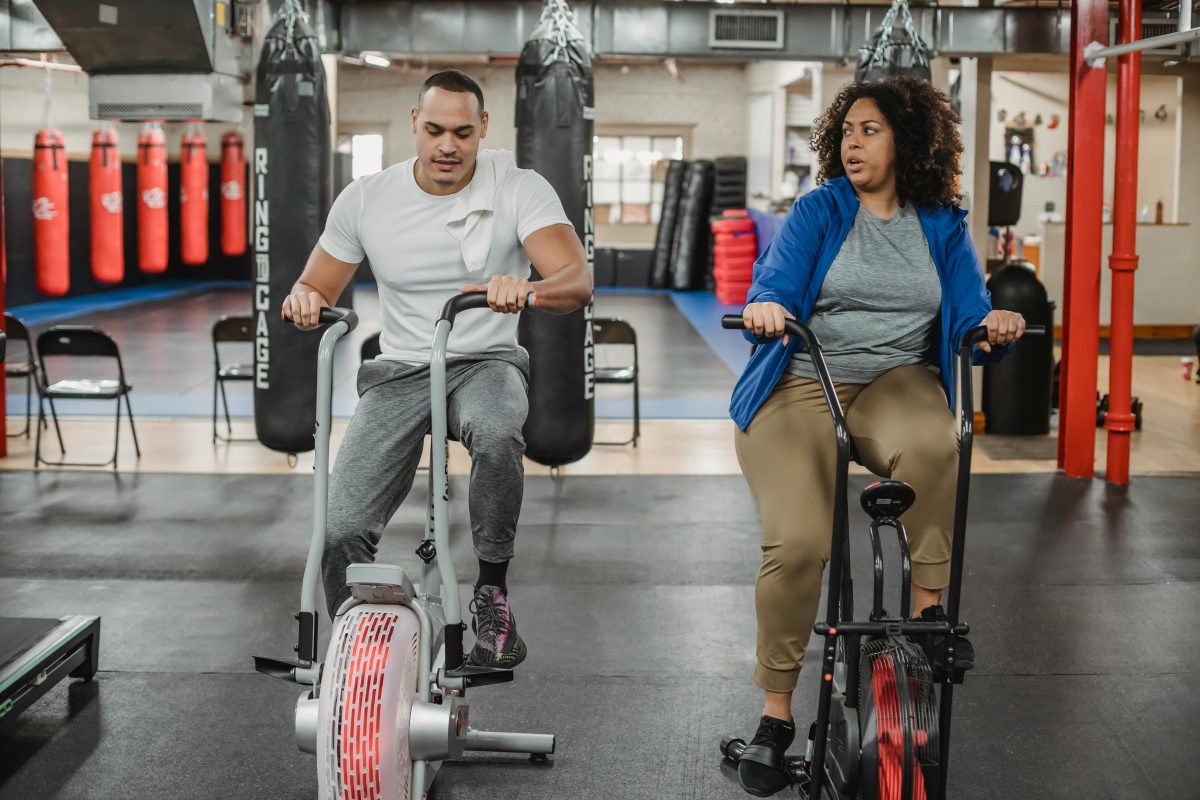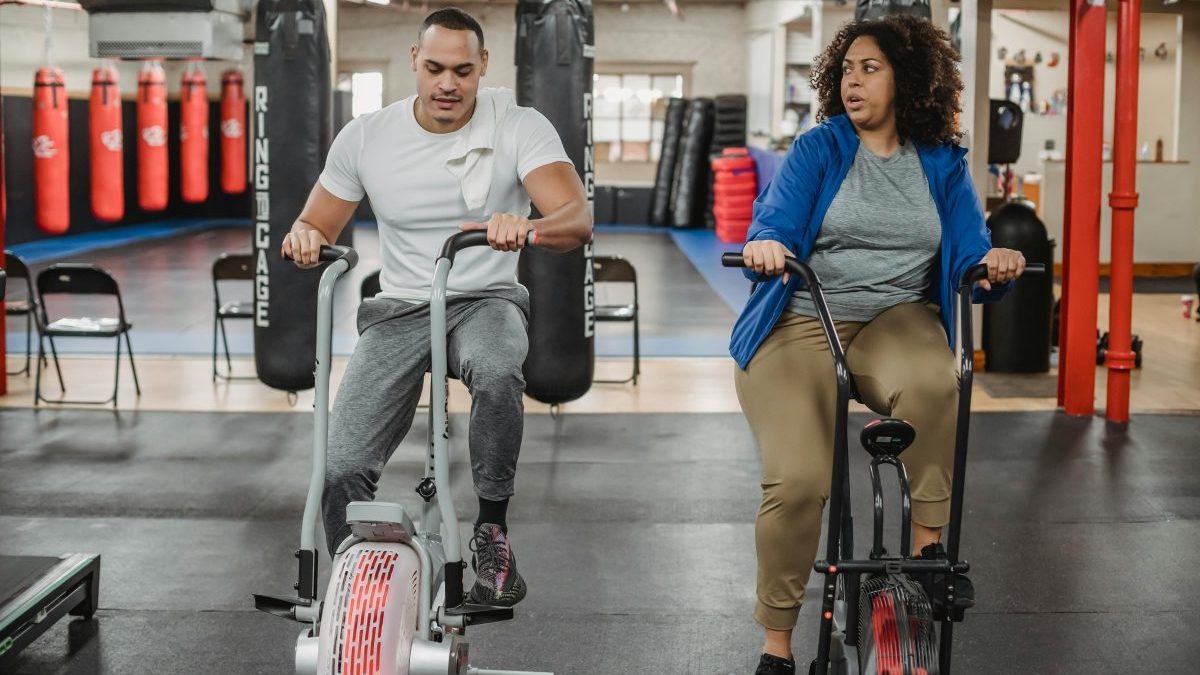Last Updated on: 14th July 2024, 09:36 am
Introduction to Low-Impact Exercises

Low-impact exercises are a gentle yet effective way to stay active, characterized by movements that minimize stress on the body’s joints. Examples abound, from brisk walking and swimming to cycling and yoga. Each of these activities offers a unique blend of benefits, ensuring there’s something for everyone.
- Cardiovascular health: Enhances heart function and circulation.
- Flexibility: Improves range of motion and reduces stiffness.
- Muscle strength: Builds and maintains muscle tone without strain.
- Injury risk reduction: Lowers the chance of exercise-related injuries.
Incorporating low-impact exercises into your routine can be transformative. They are versatile and accessible, making it easier than ever to achieve and maintain overall well-being.
Understanding the Importance of Low-Impact Exercises

Low-impact exercises stand out for their universal appeal. They are a beacon of inclusivity in the fitness world, welcoming individuals of all ages and fitness levels.
- Injury prevention and management: Significantly reduces strain on joints, tendons, and muscles.
- Chronic condition management: Offers a safe exercise option for those with arthritis, osteoporosis, and heart disease.
- Adaptability: Activities can be modified to meet individual needs and capacities.
Embracing low-impact exercises is about finding harmony in movement, respecting the body’s signals, and nurturing health at every stage of life.
The Role of Low-Impact Exercises in Weight Management

Low-impact exercises are a cornerstone of a balanced weight loss plan. They offer a sustainable, gentle approach to burning calories without the harsh impact on the body.
- Calorie burning: Activities like walking, swimming, and cycling can effectively contribute to a caloric deficit.
- Sustainability: These exercises can be performed longer and more frequently, leading to significant calorie burn over time.
- Enjoyment: Choosing activities you enjoy ensures long-term commitment and success.
Incorporating low-impact exercises into a weight management routine is both simple and effective. Consistency is key to lasting weight management success.
Low-Impact Exercises and Mental Health

The psychological benefits of engaging in low-impact exercises are profound and far-reaching. These activities serve as a powerful tool for stress reduction, significantly improving one’s mood.
- Stress reduction: Activities like yoga and swimming promote relaxation and reduce cortisol levels.
- Sleep quality: Helps regulate the body’s natural sleep-wake cycle, promoting deeper and more restorative sleep.
- Mental well-being: Regular participation leads to improvements in anxiety, cognitive function, and overall mood.
Ultimately, the integration of low-impact exercises into one’s daily routine can lead to significant improvements in mental well-being, providing a foundation for a healthier, happier mind.
Building Strength and Endurance with Low-Impact Exercises

Low-impact exercises are not just about keeping it easy on the joints—they’re also incredibly effective for building strength and enhancing endurance. By incorporating activities such as swimming, pilates, and resistance band workouts, individuals can significantly improve their muscle strength without the harsh impact of traditional weightlifting.
Swimming, for instance, engages multiple muscle groups simultaneously, promoting overall strength. Pilates focuses on core strength, stability, and flexibility, making it an excellent choice for those looking to build muscle endurance. Resistance band exercises are another fantastic option, allowing for targeted strength training that can be adjusted to suit any fitness level.
But the benefits extend beyond muscle strength. These activities play a crucial role in boosting cardiovascular health. By engaging in low-impact exercises, individuals can improve their heart rate and blood circulation, which in turn enhances oxygen flow throughout the body. This not only aids in muscle recovery but also increases overall stamina and endurance.
To tailor a low-impact exercise routine for strength and endurance, it’s important to incorporate a mix of cardiovascular and strength-training activities. Start with exercises like brisk walking or cycling to get the heart rate up, then move on to strength-focused activities such as yoga or resistance band workouts. Adjust the intensity and duration based on individual fitness levels, and remember, consistency is key. A regular routine of low-impact exercises can lead to significant improvements in both physical and mental well-being.
Embracing low-impact exercises offers a path to achieving fitness goals while respecting the body’s limits. It’s a sustainable approach to health that proves gentleness does not equate to ineffectiveness. By carefully selecting activities that build muscle and enhance cardiovascular health, individuals can enjoy the myriad benefits of a strong, resilient body and the enduring spirit of a well-conditioned heart.
Incorporating Low-Impact Exercises into Your Daily Routine

Integrating low-impact exercises into daily life need not be daunting. It can be as simple as:
- Choosing the stairs over the elevator
- Parking further away to include a brisk walk
These small changes can have a profound impact on your health, subtly building your endurance and strength.
Creating a balanced exercise plan is crucial. Aim to blend different types of low-impact activities, such as:
- Cycling on Mondays
- Yoga on Wednesdays
- Swimming on Fridays
This variety not only keeps your routine fresh but also ensures a well-rounded approach to fitness, targeting different muscle groups and improving overall body function.
Overcoming barriers to regular exercise often boils down to scheduling. Carve out specific times for your workouts and treat them as unbreakable appointments. If time is scarce, break your exercise into shorter, more manageable sessions throughout the day. Remember, consistency breeds habit, and habit solidifies into a lifestyle.
Ultimately, the key to successfully incorporating low-impact exercises into your routine is to make them enjoyable and convenient. Choose activities that delight you, and you’ll naturally gravitate towards doing them. Embrace the journey of low-impact exercise, and watch as it enhances your life, one step at a time.
In Closing
Low-impact exercises unlock a world of health benefits. They foster resilience and joy in physical activity, offering a sustainable path to wellness. By balancing gentle movements with effective outcomes, these exercises cater to all, proving that fitness is an inclusive journey. Embrace low-impact routines for a stronger, healthier future, and let every step forward be a stride towards lasting well-being.
Low-Impact Exercises and Why They Matter FAQs
Yes, swimming and cycling are considered low-impact exercises because they do not require your body to absorb high forces, reducing stress on joints and minimizing the risk of injury. Swimming provides resistance through water, which is gentle on the body, while cycling supports your body weight, limiting impact. Both activities offer excellent cardiovascular benefits and can be adjusted in intensity to suit fitness levels.
Yes, low-impact exercises are generally safe and beneficial during pregnancy, as they help maintain fitness, reduce pregnancy-related discomforts, and prepare the body for childbirth. Activities like walking, swimming, and prenatal yoga are often recommended because they are gentle on the body and can be adapted as the pregnancy progresses. However, it’s important to consult with a healthcare provider before starting any new exercise regimen during pregnancy.
Yes, low-impact exercises can help with weight loss by burning calories at a slower, more sustainable pace. While they may not burn calories as quickly as high-impact exercises, they can be performed for longer durations and more frequently, contributing to overall caloric expenditure. This makes them an effective component of a weight loss program, especially when combined with a balanced diet.
Yes, low-impact exercises can improve strength, especially when they incorporate resistance elements, such as bands, weights, or bodyweight exercises. These activities challenge your muscles in a controlled manner, promoting muscle growth and endurance without excessive strain. Regularly including strength-focused low-impact exercises in your routine can lead to significant strength gains over time.
Low-impact exercises do not necessarily require special equipment; many can be performed with just your body weight or items found around the home. However, incorporating equipment like resistance bands, light weights, or a stability ball can enhance the effectiveness of your workout and provide variety. The need for equipment depends on your fitness goals and the specific activities you choose to include in your routine.
Low-impact exercises benefit mental health by reducing stress, anxiety, and depressive symptoms through the release of endorphins, which are natural mood lifters. Engaging in regular physical activity, even at a low intensity, can improve sleep quality and increase feelings of well-being. This positive impact on mental health is an important aspect of overall wellness, complementing the physical benefits.
The frequency of low-impact exercises should align with general physical activity guidelines, which recommend at least 150 minutes of moderate-intensity or 75 minutes of vigorous-intensity activity per week. This can be broken down into sessions that fit your schedule, such as 30 minutes five times a week. Consistency and progression in intensity and duration over time are key to reaping the benefits.
Low-impact exercises are physical activities that put minimal stress on the body’s joints. These exercises are ideal for individuals recovering from injury, older adults, or those just starting a fitness journey. They help improve cardiovascular health, flexibility, and muscle strength without the high risk of injury associated with high-impact workouts.
Examples of low-impact exercises include walking, swimming, cycling, elliptical training, yoga, and Pilates. Each of these activities offers a way to get fit and stay active while minimizing the risk of injury to the joints. They can be easily modified to match individual fitness levels and goals, making them accessible to a wide range of people.
Low-impact exercises matter because they provide a safer alternative for maintaining physical fitness, especially for people with joint issues or those prone to injury. By engaging in low-impact activities, individuals can achieve a healthy lifestyle while minimizing the strain on their bodies. This approach encourages consistent physical activity, contributing to long-term health benefits.
Orlando is a all round athlete from Australia, now resident in Germany. His sports of passion of American Football(Offensive line), weight training and indoor rock climbing where he uses his 195cm wing span to his advantage.



